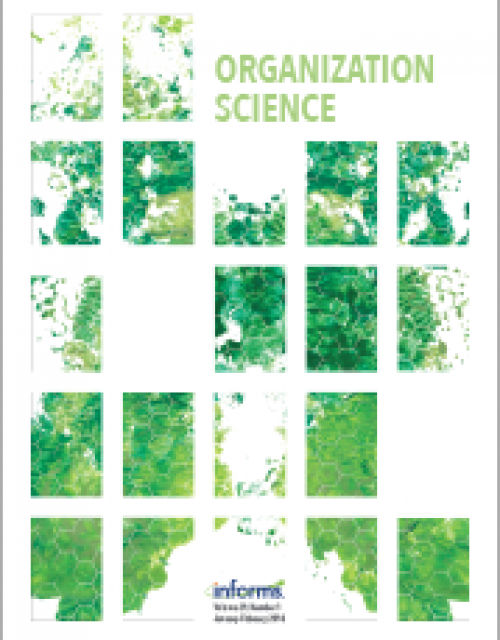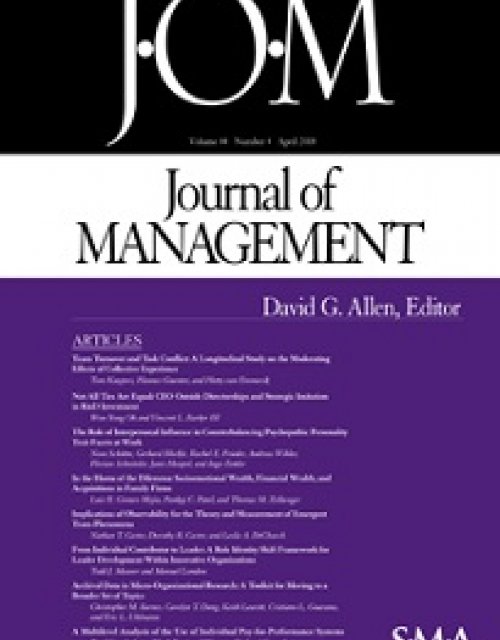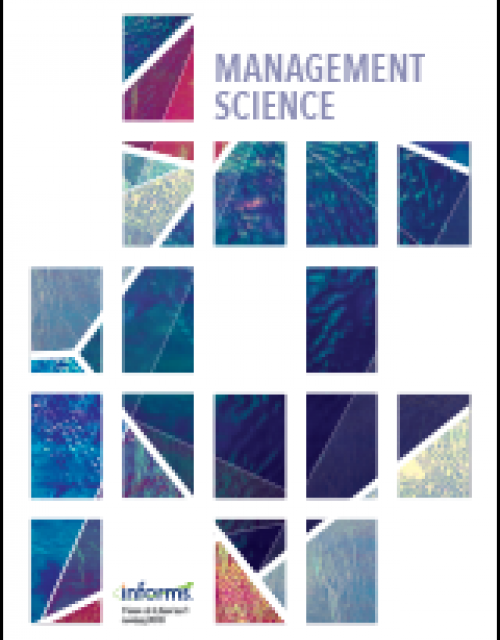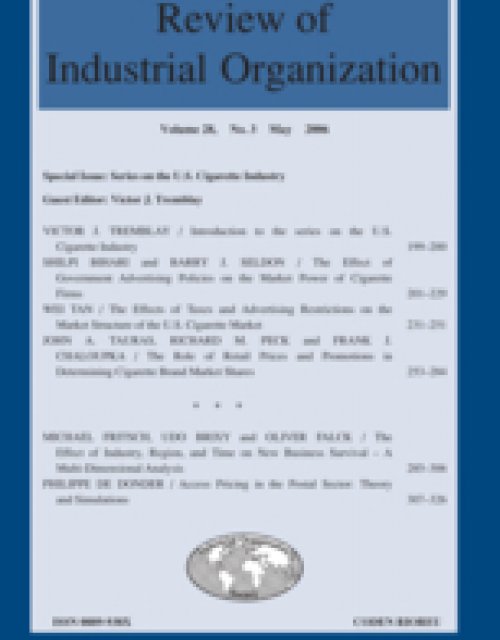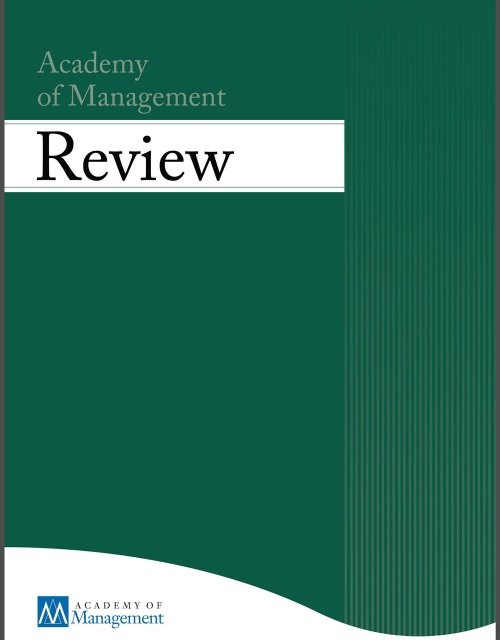Publication records
Subject(s)
Human resources management/organizational behavior
Keyword(s)
Negotiation, first offer, framing, satisfaction, power, reservation price
In distributive negotiations, people often feel that they have to choose between maximizing their economic outcomes (claiming more value) or improving their relational outcomes (having a satisfied opponent). The present research proposes a conversational strategy that can help negotiators achieve both. Specifically, we show that using an offer framing strategy that shifts offer recipients' attention to their reservation price (e.g., “How does my offer compare to your minimum price?”) leads to both (a) an assimilation effect whereby recipients make more favorable counteroffers (economic benefit) as well as (b) a contrast effect whereby recipients feel more satisfied with the negotiation (relational benefit). We find evidence for the effectiveness of this conversational strategy across four experiments (N = 1522) involving different negotiation contexts (real estate, restaurant sale) and participant samples (MBAs, sales agents, online participants), and also document negotiator power as an important boundary condition. Overall, our research suggests that economic and relational benefits do not have to be mutually exclusive in distributive negotiations, that the perceived extremity of an offer is subjective and can be strategically influenced, and that assimilation and contrast effects can operate simultaneously when they relate to separate outcomes.
With permission of Elsevier
Volume
87
Journal Pages
103943
Subject(s)
Information technology and systems
Keyword(s)
Cybersecurity, sovereignty, open source, verification,
supply chain risks
supply chain risks
Increasing dependence on information technology calls for strengthening the requirements on their safety and security. Vulnerabilities that result from flaws in hardware and software are a core problem which market mechanisms have failed to eliminate. A strategy for resolving this issue should consider the following options: (1) private- and public-sector
funding for open and secure production, (2) strengthening the sovereign control over the production of critical IT components within an
economic zone, and (3) improving and enforcing regulation. This paper
analyses the strengths and weaknesses of these options and proposes
a globally distributed, secure supply chain based on open and mathematically proved components. The approach supports the integration
of legacy and new proprietary components.
funding for open and secure production, (2) strengthening the sovereign control over the production of critical IT components within an
economic zone, and (3) improving and enforcing regulation. This paper
analyses the strengths and weaknesses of these options and proposes
a globally distributed, secure supply chain based on open and mathematically proved components. The approach supports the integration
of legacy and new proprietary components.
Volume
29
Journal Pages
30–36
ISSN (Online)
2199-9201
ISSN (Print)
1619-7623
Subject(s)
Economics, politics and business environment; Strategy and general management; Technology, R&D management
Keyword(s)
Market entry, pre-entry experience, demand-side perspective, information & communication technologies
JEL Code(s)
C51, L10, O33
We offer theory and evidence about how the fit between firm experience (supply side) and consumer preferences (demand side) affects postentry performance into a new technology. Specifically, we explore different types of preentry experience (technological and market experience) and use different aspects of postentry performance to draw inferences about consumer heterogeneity. Preentry technological experience (same product and different consumers) helps firms attract a larger share of intensive users (aligning with early adopters) but only if they enter the market early when these adopters make decisions. Preentry market experience (different product and same consumers) helps firms attract a larger share of lighter users, consistent with characterizations of mass market users. Exploiting different components of firm performance in the global second-generation mobile telecommunications industry (average usage intensity and market penetration) allows us to articulate and identify the paths and mechanisms that allow preentry experience to affect postentry performance. The theory as well as important theoretical boundary conditions have implications for research on preentry experience, demand-side heterogeneity, and industry evolution.
© 2019, INFORMS
Volume
31
Journal Pages
245–265
Subject(s)
Finance, accounting and corporate governance
Keyword(s)
Stock price synchronicity, price informativeness, illiquidity, zero returns, corporate transparency, sell-side analysts, control variables, fixed effects, nonlinearity
JEL Code(s)
G12, G14, G15, M40, N20
Volume
37
Journal Pages
419–456
ISSN (Online)
1911-3846
ISSN (Print)
0823-9150
Subject(s)
Finance, accounting and corporate governance
Keyword(s)
Corporate political activism, political connections, Citizens united, stock returns
This paper analyzes the effect that the U.S. Supreme Court's landmark decision on Citizens United vs. FEC had on corporate political activism. The decision opened the door for corporate treasuries to engage in independent political spending. Politically connected firms have lower announcement returns at the ruling than non-connected firms. The estimates suggest that the value of a political connection decreases by $6.9 million. To evaluate the effect of Citizens United on corporate political activism, we explore the fact that Citizens United also lifts bans on independent political spending in states where such bans existed. After the ruling, firms headquartered in states where bans are lifted have fewer state-level connections relative to firms in other states. Overall, our evidence supports the hypothesis that independent political spending crowds out political connections. We do not find any significant crowding-out effects of independent political expenditures on lobbying activity, executive contributions, and political action committees (PAC) contributions.
With permission of Elsevier
Volume
60
Subject(s)
Strategy and general management; Technology, R&D management
Keyword(s)
Learning-by-hiring, inter-firm mobility, innovation, patents
Research has shown that hiring R&D scientists from competitors fosters organizational learning. We examine whether hiring scientists who have many collaborative ties with the hiring firm prior to the mobility event produces different learning outcomes than hiring scientists who have few or no such ties. We theorize that prior ties reduce explorative learning and increase exploitative learning. From our arguments we also derive other testable implications. Namely, we posit that prior ties lead the hiring firm to focus on that part of a new hire’s knowledge with which they are already familiar and that they help appropriate the new hire’s newly generated knowledge. At the same time, prior ties induce new hires to search locally within the hiring firm’s knowledge base and also to produce more incremental, lower-impact innovations. Using data on R&D scientists’ mobility in the Electronics and Electrical Goods industry, we find broad support for our hypotheses. Our results extend our theoretical understanding of learning-by-hiring processes and bear practical managerial implications.
With permission of SAGE Publishing
Volume
46
Journal Pages
287–320
Subject(s)
Economics, politics and business environment
Keyword(s)
Default options, online platforms, charitable giving, field experiment
JEL Code(s)
D03, D01, D64, C93
Volume
101
Journal Pages
808–826
Subject(s)
Management sciences, decision sciences and quantitative methods
Keyword(s)
Capacity investment, optimal contracts, capital diversion, financial constraints, newsvendor model, moral hazard
We study a firm's capacity choice under demand uncertainty given it must finance this investment externally.
Sharing profits with investors causes governance problems affecting both capacity and demand: the firm may “steal" capital, which reduces effective capacity, and \shirk" on market-development, which reduces demand. We adopt an optimal contracting approach whereby the firm optimizes among feasible financial claims derived endogenously. We characterize its optimal financing and capacity choices. First, debt financing is optimal: it minimizes the incentives to both divert and shirk. Second, the firm underinvests (overinvests) if the effort problem is mild (severe) enough relative to the diversion problem. Thus, a worsening of the same governance problem can lead to over- or underinvestment depending on circumstances. Third, we find that the diversion and shirking problems interact in their impact on capacity investment. In particular, if the shirking problem is mild enough, the more severe the diversion problem, the less the firm invests. However, if the shirking problem is severe enough, the effect of diversion is reversed: the more severe the diversion problem, the more the firm invests.
Sharing profits with investors causes governance problems affecting both capacity and demand: the firm may “steal" capital, which reduces effective capacity, and \shirk" on market-development, which reduces demand. We adopt an optimal contracting approach whereby the firm optimizes among feasible financial claims derived endogenously. We characterize its optimal financing and capacity choices. First, debt financing is optimal: it minimizes the incentives to both divert and shirk. Second, the firm underinvests (overinvests) if the effort problem is mild (severe) enough relative to the diversion problem. Thus, a worsening of the same governance problem can lead to over- or underinvestment depending on circumstances. Third, we find that the diversion and shirking problems interact in their impact on capacity investment. In particular, if the shirking problem is mild enough, the more severe the diversion problem, the less the firm invests. However, if the shirking problem is severe enough, the effect of diversion is reversed: the more severe the diversion problem, the more the firm invests.
Copyright © 2019, INFORMS
Volume
65
Journal Pages
4951–5448
Subject(s)
Economics, politics and business environment; Information technology and systems; Technology, R&D management
Keyword(s)
Telecom mergers, static and dynamic efficiency, difference-in-difference
JEL Code(s)
L22, O33, G34, L96
This paper studies five mergers in the European wireless telecommunication industry and analyzes their impact on prices and capital expenditures of both merging carriers and their rivals. We find substantial heterogeneity in the relationship between increases in concentration and carriers’ prices. The specifics of each merger case clearly matter. Moreover, we find a positive correlation between the price and the investment effects; when the prices after merger increase (decrease), the investments increase (decrease) too. Thus, we document a trade-off between static and dynamic efficiencies of mergers.
Copyright © 2019, The Author(s)
Volume
55
Journal Pages
375–402
Subject(s)
Strategy and general management
Keyword(s)
Luck, biases, regression to the mean, strategic factor market, strategic opportunities, behavioral barriers
How performance is perceived and attributed has important implications for strategizing. Much research in the cognitive and social sciences suggests that people tend to mistake luck for skill in evaluations and ignore how future performances regress to the mean. We argue that these systematic mistakes can be translated into an alternative source of profit: informed strategists can take advantage of others’ misattributions of luck by exploiting the false expectations and mispricing in strategic factor markets. We also discuss the learning and interdependency barriers that protect, and thus predict the attractiveness of, a behavioral opportunity and suggest approaches to help overcome these behavioral barriers.
With permission of the Academy of Management
Volume
44
Journal Pages
896–915
ISSN (Online)
1930-3807
ISSN (Print)
0363-7425
